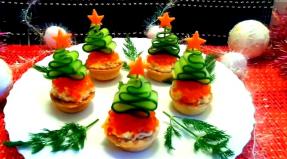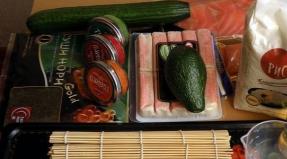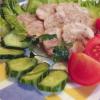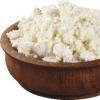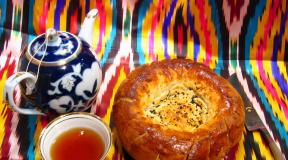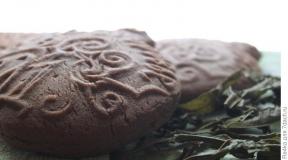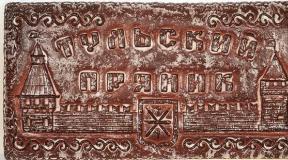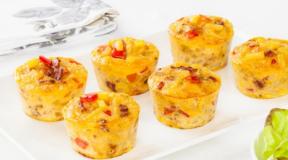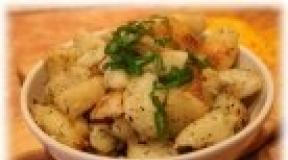Bar utensils names and uses. Red wine glasses - choosing the right glass
Cocktail recipes often indicate the glass in which it should be served. Do not neglect this point if you want to serve drinks beautifully and show your knowledge of table etiquette. In addition, the cocktail glass plays not only an aesthetic role - it also has a practical purpose. If the drink must remain cold, choose a glass with a high stem. And cocktails, which can be warmed in the palms, are poured into low ones.
Of course, you can mix the cocktail even in a half-liter can, and it will still be delicious. But the evening will lose some of its charm. Think back to going to a new pub or bar with friends. Serving cocktails is always a pleasure. You see a variety of shapes, colors and smells, fruits and straws - and you want to taste them all. Therefore, the types of glasses are mandatory information for bartenders, and simply educated people. Let's take a closer look at everything.
Cocktail glass
Although it serves a variety of chilled cocktails without ice, it is best known as a martini glass (thanks to the James Bond movies). It serves:
- "Cosmopolitan";
- Manhattan;
- Brandy Alexander;
- "Kamikaze";
- "Blue Lagoon";
- "Daiquiri";
- martini (but not pure).
The emergence of this glass is surrounded by a funny legend. They say it was invented during Prohibition in the United States, so that during a sudden search, you could quickly pour out the contents. Now the wide top of the cocktail glass serves the opposite function - it is needed to enjoy the aroma and slowly sip the drink.
Glass for "Margarita"

Ideal for this cocktail: it stays cold for a long time and looks very stylish. There are three main types that differ in size and shape:
- small: the drink is served without ice, just chilled;
- medium: add a few pieces of ice;
- big: a lot of ice and a lot of "Margarita".
They are not universal glasses and, moreover, they take up a lot of space. Therefore, buy Margarita glasses only if you are a big fan of it. They are also optional in bars. "Margarita" can be made in a regular cocktail glass, but if you want everything to be according to the rules, you need to purchase them.
Special glasses

There are other types of cocktail glasses designed for specific drinks. Let's list them:
- Glass for "Irish Coffee" (pictured on the right). It is used not only for serving coffee with liqueur according to the classic recipe. A variety of types of coffee and hot alcoholic beverages are poured into such glasses. For example, they often serve grog or mulled wine. Thanks to the handle, the hot drink can be drunk immediately, rather than waiting for it to cool down. They must be made of heat-resistant glass. They are very popular in bars and cafes because these cocktail glasses look much more presentable than a regular cup.
- Glass "Hurricane" (center). Named after the pear-shaped kerosene lamps (from the English hurricane lantern). The classic Hurricane, Pina Colada, Tequila Sunrise and other chilled cocktails are poured into it.
- On the left in the photo is a snifter, which we know as a cognac glass. It serves strong dark drinks: cognac, brandy, whiskey. Thanks to the short leg, the drink can be warmed in the hands - therefore it is poured into it without ice. Recommended to be served after dinner, complete with an upholstered armchair and a burning fireplace.
Highball and Collins

It is easy to confuse them. In the photo on the right is a collins, on the left is a highball. The glass in the center is something in between; the distinctive features of the first two glasses are combined in it. All these are tall glasses that are used exclusively for mixed cocktails: they will not be able to stratify the drinks. Served with crushed or crushed ice. Pour into a highball:
- "Screwdriver";
- Cuba Libre;
- Bloody Mary;
- "Mojito"
- gin and tonic;
- "Zombie".
What is served in Collins:
- Tom Collins;
- Long Islands;
- Mojito;
- "May Tai".
Also, these glasses are often served non-alcoholic drinks: juice, mineral water, non-alcoholic "Mojito" and lemonade. This is a set of cocktail glasses that every bar should have - they serve the most popular drinks.
Lowball, Rock Glass, Old Fashioned

All these are the names of one type of glasses. Definitely a must-have for any bar. These low glasses are used for iced spirits and mixed cocktails. In an ordinary glass, about 30 g of the drink, in a double (pictured on the left) - 60 g. This is the glass that cool guys in the movies mean when they order a double whiskey. They serve:
- "Black Russian";
- "White Russian";
- "Negroni";
- Old Fashioned;
- Grow Neil;
- whiskey and cola;
- aperitif drinks;
- strong alcohol with or without ice.
Shots

They are definitely required in any bar, because they are extremely popular due to their effectiveness. Shots or, as we call them, piles are low glasses of different shapes and sizes. They are made of thick glass so that a person who drank a shot in one fell swoop does not break the glass on the table. This is especially true for tequila boom lovers. Great for layered cocktails as well as pure drinks. Among the most popular shots:
- "Irish flag".
- "B-52".
- "Kamikaze".
- "Hiroshima".
- "Green Mexican".
- "Boyarsky".
- Sambuca, including burning;
- Vodka.
- Tequila (although there is a special glass for tequila, it is often served in regular shots).
Champagne glasses

These glass or crystal glasses are simply irreplaceable for big holidays, be it New Years or weddings. These are tall glasses with a long stem, which should hold the champagne bubbles inside for as long as possible and keep the drink cold, there are three types:
- Flute (pictured on the right). The classic version. Suitable for both pure drinks and champagne cocktails. Looks elegant with a berry or lemon wedge.
- Tulip (center). An exquisite glass, which is often made of crystal. Unlike flute, it will not hold bubbles for a long time, but it is suitable for mixing champagne with other sparkling wines.
- Bowl (left). A glass for special occasions. It is convenient to pour champagne or other sparkling wine in them for a large number of guests. Thanks to its convenient shape, you can use a lemon wedge for decoration. Simply indispensable for the Great Gatsby Party.
Wine glasses

The most popular home glasses are wine glasses. They come in a variety of shapes, from classic to swirling horns and bucket-sized glasses. They also vary greatly in price, from regular glass and crystal goblets to vintage ones with a wide variety of decorations. Traditionally, two types are distinguished: for white and red wine.
The white wine glass (right) is tall and open. For red wine, choose smaller and more round ones (in the photo on the left). It is not difficult to distinguish them. They can also be used as wine-based cocktail glasses. For example, for sangria.
Glasses and mugs for beer

In bars, beer, especially light beer, is usually served in glasses (such as on the right and in the center). They are easy to pour without foaming and look elegant. They are also used as glasses for cocktails based on beer, ale or cider. Syrup, fruit, juice or other alcohol are added to the main drink. For instance:
- "Brummeister".
- "Michelada".
- "Disintegrator".
- "Ruff".
Not everyone likes such combinations, and mostly beer is drunk in its pure form. Therefore, beer mugs are much more common in pubs (left). Thanks to the handle, the drink stays cold, and the large volume of the mug allows you to stretch one portion for the whole football half. For home use, either ordinary mugs or special beer mugs are usually chosen.
This basic knowledge of the types of glasses will come in handy more than once in a bar, pub, or at a trendy party. Don't miss your chance to show off your knowledge of alcohol etiquette!
Surely you have heard the names "vinca", "champagne", "cognac", etc. in relation to barware. For some, it hurts the ear, and some are used to it, and they themselves are not averse to improvising with a play on words. Many of our guests, those who are accustomed to being in good establishments, and such distortions of names for me, hurt the ear, and I do not want to get used to this.
So, each drink has its own vessel with a professional name. In many publications dedicated to the bar, various names for barware are given. This list can be considered the most correct, since the above types of dishes correspond to the indicated names in 80% of the literature.
| HIBALL - / from the English. high-ball / capacity 200-400ml, glass for soft drinks and long drinks. There are varieties of highball. The most popular are "zombies", "collins", "tumbler". | |
| SHOT - / from English. shot - "shot" / Used to prepare shots (vodka, tequila, etc.) and layered cocktails. It is customary to drink cocktails in shots quickly (in one gulp, in one gulp: B-52, Oyster, Heroin, Basketball, etc.). Ideal for noisy and fun parties. The standard volume is 40 - 60 ml. | |
| RUMKA is intended for strong drinks. It is customary to drink cocktails in shot glasses quickly (in one gulp). Ideal for noisy and fun parties. The standard volume is 40 - 60 ml. | |
| ROX, OLD FASHION - capacity 100ml. For serving alcoholic beverages using the following methods: on the rocks - pure with ice. Mist neat spirits on crushed ice, as well as for traditional pure whiskey serving and whiskey-based mix-drinks. | |
 | Red Wine Glass ("red wine glass") - a glass for red wine For red wines, which have a rich rich color, deep and wide glasses are necessary. The bowls of these glasses are the widest and highest, usually apple-shaped, the stem is straight and high. The glass is not completely filled with wine, otherwise its flavoring bouquet will be lost. The wine is poured into a glass for two thirds, one third will be occupied by air. |
 | White Wine Glass - a glass for white wine. For white and rosé wines, choose small glasses (smaller than for red). The stem of the glass for white wine is slightly lower than for red wine, since these wines are often drunk chilled. For the same reason, the glass bowl has a smaller volume. |
| FLUTE - Champagne Flute. Sparkling wines are served in a flute-shaped glass - a classic shape that expands upward (the walls are slightly concave). Secular cocktail glass based on champagne and sparkling wines. The long stem keeps the glass chilled and keeps the cocktail warm. The standard volume is 150 ml. | |
| SNIFTER - also called "brandy glass", "Cognac Ballon", "classic balloon": a wide bottom, tapering towards the middle, and a neck opening upwards (pear-shaped), a low leg. It can be small, with a capacity of 25-35 ml, or large - up to 125 ml. A large cognac glass is filled only 1 / 4-1 / 5 of its volume. Used exclusively for serving brandy and cognac / armagnacs. That is why the snifter is made with a very small leg and a wide bottom so that it lies in the palm of your hand, and it is the warmth of the palm that should warm the cognac so that it opens up all three waves of aroma. The convex shape and large volume make it possible to appreciate the aroma of drinks. | |
 | COCKTAIL GLASS - in some places there is the name "cobbler", "goblet", refers to a large family of glasses for cocktails. Used to serve vermouths and dessert cobbler cocktails. Since cobblers are larger than other glasses and are widened at the top, they are ideal for fruit decorations. Usually, the glass is first cooled, then, using a strainer, the contents of the shaker are poured into it. The long stem keeps the glass chilled and keeps the cocktail warm. You cannot serve any drink in it neat and with ice (including Martini vermouth). The standard volume is 90 - 150 ml. |
 | HARRIKANE - aka "hurricane" or "sling". A curved glass is used to make necks and other sweet alcoholic and non-alcoholic cocktails. The standard volume is 300 - 400 ml. |
| MARGARITA - for making a legendary cocktail ”or its other variation. Usually the glass is decorated with a salted or sugar lump: the edges of the glass are dipped in lime juice and dipped in a saucer filled with salt or sugar. The standard volume is 150-200 ml. | |
| IRISH is a thick glass for hot drinks. Used to prepare warming cocktails. The standard volume is 200 - 250 ml. The neat handle prevents scalding on the hot glass of Irish coffee, grog or mulled wine. | |
 | BEER GLASS - For serving beer and beer cocktails. Volume 220-1000 ml. |
| BEER MUG - for serving beer. Volume 250-1000 ml. |

Glassware serving rules
When serving glassware (glasses, glasses, bottles!), We use not only the “hand rule”, but also the principle “waiter-Guest zone”. Glasses should be taken only by the stem or base of the glasses so that there are no fingerprints on the glass itself. The first 1/3 of the glass (leg, base) is considered the "waiter's zone", and everything else is the "Guest's zone", only the Guest has the right to touch it.
In no case should you take the glasses by the top, even when you remove empty (dirty) dishes from the table. And bottles cannot be taken by the neck.
Wine serving
As a rule, Guests find it difficult to choose wines, so the task of the waiter is to help in choosing wine. To successfully solve this problem, the waiter needs to know:
Taste qualities of wine (light, tart, table, etc.);
The price of wine;
Bottle capacity;
The country of the wine producer and, preferably, the region where the grapes taken for the production of this wine were grown, as well as the grape variety;
The firm is the manufacturer of this brand of wine;
That white wine is served with fish dishes, red wine with meat dishes, pink wine with poultry and dessert;
Serving temperature for wines and spirits.
When offering wine, be guided by the taste of the Guest! “In our menu you will find the most popular wines from the best producer. Which do you prefer, red or white (sweet or dry)? "
When offering wine, the waiter should be confident, but it is unacceptable to give the Guests information about the wine without being sure of it. Connoisseurs, having tasted the wine, will immediately identify the error, which may be the reason for refusing wine.
If the Guest asks something about wine that the waiter does not know, he must apologize and then clarify the necessary information with the shift manager or bartender.
Better yet, bring and show the Guest a bottle of wine in question. For a connoisseur, this information will be enough, and no more questions will arise. Without fail, the waiter must clearly repeat the order for the wine!
Before serving a bottle of wine on the table, the waiter serves the table with glasses. Wiped and polished wine glasses are stored at the bar by the bartender. Glasses should be taken only by the leg so that there are no fingerprints on the leg and on the glass itself. On the table, glasses are placed to the right of the Guest, in continuation of the tip of the knife.
After the table is served, wine can be served.
The barman opens the wine, the waiter brings an already open bottle of wine to the table for the Guests, brings it to the Guest, names the wine and puts it on the table: Please, your Cabernet Sauvignon.
Consider the following when serving wine:
If Guests have ordered a bottle of another wine, the waiter must replace the glasses with clean ones. In the event that they ordered the same wine as before, Guests can add wine to the glasses from which they have already drunk.
If, after the wine has been poured to all the Guests, the bottle is not completely empty, it is placed back on the table with a label to the Guest.
The guest pours the wine on his own, but if he wishes, the waiter can pour the wine too.
o The waiter takes the bottle in his right hand, closer to the bottom, without closing the label, which should be facing the Guest.
o When pouring wine, the bottle should be kept in your right hand at all times, with a label to the Guest.
o "For the host of the table" wine is poured last.
o Red wine is served at room temperature and poured into about 2/3 of the glass's capacity.
o White and rosé wines are served chilled and served in just under 1/2 glass.
o So that after the waiter finishes pouring wine into the glass, the drop remaining on the neck does not go down the bottle, it must be “caught”. They do it as follows: after the waiter has poured the wine into the glass, he slightly raises the bottle and turns it clockwise. In this case, the drop spreads along the circumference of the neck. Then the neck of the bottle is blotted with a napkin by reverse rotation of the bottle.
o Do not allow drops to fall on the bottle label!
If a guest has ordered a bottle of expensive wine, the waiter brings it unopened and opens it directly on the table. The waiter brings expensive white wines in an ice bucket covered with a handbrake (rolled up clean towel).
The guest can refuse wine, in this case, contact the manager. Replacement of wine without including its cost in the bill is made in the following cases(the decision is made by the manager):
o The taste and aroma of the wine does not correspond to the given brand of wine (for example, the wine is sour).
o Defect of the manufacturer (underfilling wine, bottle or label defect, etc.).
Table etiquette is not an easy science, it is very easy to get confused in a variety of forks-plates. Confusion is often caused by various types of glasses, each of which is designed for a different type of beverage.
By glasses, we mean not only glass vessels for wine and cocktails, but also glasses for champagne, wine glasses, etc. - in general, what is meant by the word in English stemware, meaning cutlery glass on a stem. What types of glasses are there?
All types of glasses are divided into several main groups.... These include:
- wine glasses;
- glasses for champagne and sparkling wines;
- glasses for cocktails;
- snifters (whiskey and brandy glasses);
- glasses for liqueurs.
Let's take a closer look at each type of glasses.
- Wine glasses
Red wine glass(Red Wine Glass). More squat than a white glass. Volume - 200-300 ml.
Glass for white wine(White Wine Glass). More elongated than a red glass. Volume - 180-260 ml.
- Glasses for sparkling wine and champagne
Champagne is served either in tall wine glasses (flute flute) or in champagne bowls. The choice of glass affects the rate at which carbon dioxide is released from the drink.
Wine glass flute(flute) (Champagne Flute). Volume - 160-300 ml. It also serves some beers, other sparkling wines and cocktails with them. More popular because in such glasses, carbon dioxide comes out more slowly.
Wine glass bowl(Champagne Saucer). Volume - 140-160 ml. Usually used at special events where you need to build towers from glasses. It can also serve various cocktails (for example, daiquiri).
- Snifters
Snifters (ballons) are glasses on a short stem with a wide bottom, tapering towards the top. They serve brandy, cognac, whiskey
Cognac glass(Cognac Balloon). It serves cognac, brandy, young armagnac, calvados. Volume - 250-875 ml.
- Liqueur glasses
Liqueur glass(Cordial Glass). For pure liquors. Volume - 40-60 ml.
Stack(Shot Glass). For pure alcoholic drinks without ice, as well as cocktails-shots that are drunk in one gulp. Volume - 40-60 ml.
Glass for vodka... Volume - 40 ml.
- Cocktail glasses
Perhaps the most numerous and varied type of glass is cocktail glasses. This includes the following types of glasses.
Cocktail glass(Cocktail Glass, Martini Glass). Also called a martini glass after one of the most famous cocktails served in it. It serves medium sized cocktails, chilled but no ice. It is not used for serving drinks with ice and in pure form (including Martini vermouth, despite the name). Volume - 90-280 ml.
Margarita(Margarita Glass). A glass for serving the Margarita cocktail, as well as frozen cocktails and drinks. Volume - 200-250 ml.
Highball(Highball). It is used for juices, carbonated and soft drinks, mineral water, large volume cocktails. Volume - 160-240 ml.
Collins(Collins). It is used for juices, carbonated and soft drinks, mineral water, large volume cocktails. Volume - 240-320 ml.
Hurricane(Hurricane Glass). It serves tropical cocktails. Volume - 400-480 ml.
Rocks(Rocks). It serves pure whiskey, cocktails, pure drinks with ice. Volume - 220-300 ml.
Making cocktails requires special tools called bar stock. The number of tools depends on the tasks and the skill level of the bartender. The article contains a brief description of the main elements and will help beginners navigate when completing a home bar: what to buy first, and what you can wait with until the next paycheck.
Attention! The division into mandatory and optional inventory is conditional, because even a shaker can be replaced with a liter glass jar with holes in the lid, and the finished cocktail can be poured into a tea mug. But between the banal mixing of alcohol-containing liquids and the preparation of cocktails there is a difference in the approach to the process - it is important for the bartender not only to observe the proportions and technology of the recipe, but also to do it beautifully, turning the whole process into a show. It is difficult to achieve spectacularity without the right tools.

Mandatory bar stock
1. Shaker(from the English shake - "shake") - a container designed for mixing ingredients (often with different densities). There are two types of shakers:
Classical(European, continental or cobbler) - consists of three metal elements: a glass or flask, a lid (cap) and a filter in the form of a strainer mounted in the lid.
The advantage of the design is ease of use, but there are also a number of disadvantages. The first - under the influence of ice, the metal quickly cools, as a result the removable parts "stick" to each other and it can be difficult to separate them at the right time. The second - in a classic shaker, the ice melts faster, since the components are poured on top of the ice, because of this, with long shaking, the cocktail can turn out to be watery.
 The classic shaker is easier to use, but sometimes freezes
The classic shaker is easier to use, but sometimes freezes Boston (American) shaker- the choice of professionals, consists of two metal or glass mixing bowls that are stacked on top of each other. With a certain skill, making cocktails with a Boston shaker turns out faster than a classic one. The second advantage is that the appearance of water in the cocktail due to melting of ice is practically impossible, since the ingredients are in a glass without ice before shaking.
Disadvantage - the Boston shaker can only be used with additional tools: a strainer (strainer) and a bar spoon. It also requires at least some preliminary preparation.
 Traditional Boston shaker rendition: bottom metal and top glass beakers
Traditional Boston shaker rendition: bottom metal and top glass beakers If you plan to make only a few cocktails a week, then for a home bar it is better to purchase a classic shaker, which is easier to use and looks more spectacular. Boston is more suitable for professionals.
2. Glasses and wine glasses. Functionally, these are two different types of bar stock.
Bar (mixing) glasses are needed for mixing ingredients that go well with each other, that is, they have almost the same density, so a shaker is not required. The second purpose is to cool the finished cocktail.
Bar glasses differ in material (metal, glass or plastic), volume (from 350 to 800 ml), shape and cut. The last characteristic affects only the appearance.
 After mixing in a glass, the cocktail is poured into a serving glass and decorated
After mixing in a glass, the cocktail is poured into a serving glass and decorated Glasses are used to serve cocktails. In a professional environment, each group of cocktails has its own glass of unique shape and volume. At home, they usually manage with several of the most "popular" types: a glass, a rock, a highball and a cocktail glass (martini glass).
 Basic serving glasses
Basic serving glasses 3. Measuring cup (measuring cup or jigger). In the classic American version, it is a 40 ml stainless steel cone-shaped container with a notch inside. Allows you to add ingredients, observing the proportions of the recipe with milliliter precision.
Most modern bartenders have abandoned the classic jigger, preferring an alternative with two cone-shaped containers of different volumes (usually one twice the size of the other), which are connected by bottoms. The more voluminous part of the measuring cup is called the "jigger", and the less capacious part is called the "pony".
Measuring cups differ in shape and volume, the most popular options are 40 x 20 ml, 50 x 25 ml and 30 x 60 ml. It is desirable that there are notches inside with a certain step (5 or 10 ml), showing the volume of the liquid.
 The upper part is jigger, the lower part is ponnie
The upper part is jigger, the lower part is ponnie With experience, the bartender's eye becomes more accurate and there is no need for a jigger. True, the owners of some establishments force even professionals to use measuring cups so that customers can see that the correct amount of alcohol is poured into their cocktail and do not cheat.
4. Bar spoon. It is necessary for mixing ingredients in a mixing glass, but often performs several additional functions. Outwardly, it looks like an ordinary teaspoon, only with a long handle (20-50 cm), on the back end of which there can be a “pistil” that replaces a mudler, or a fork for convenient work with lemon, zest, fruits and berries when decorating a cocktail. One bar spoon holds 5 grams of the substance or 5 ml of liquid. This is very useful when measuring the amount of sugar, syrup or honey.
In its most practical design, the bar spoon has a twisted handle with a "heel" at the end for stacking layered cocktails. The spoon is turned over and the ingredients are slowly poured over the twisted part of the handle, while the "heel" barely touches the layer of liquid in the glass.
 Bar spoon for stacking layered cocktails
Bar spoon for stacking layered cocktails Professionals usually have several different bar spoons. For a home bar, one is enough for making layered cocktails.
Optional bar stock
5. Strainer (bar strainer). Needed for ice separation. Works like a kitchen sieve but has a different shape. It is a round stainless steel plate with a spiral (spring) at the edges.
 The spring allows you to use the strainer in any glass
The spring allows you to use the strainer in any glass Only a Boston shaker needs a strainer.
A similar device is fine or double strainer- a fine tea-like strainer that is used to separate the remnants of crushed ice and pulp in cocktails with freshly squeezed juice or fruit.
 Double strainer
Double strainer 6. Madler. Required if you want to knead one of the cocktail ingredients, for example, mint, apple or lemon. Basically, mudlers are made of wood, plastic and stainless steel. The classic length is 19 cm.
 Madlery
Madlery If the pulp has a fibrous structure (ginger, apple), then it is better to use a device with a smooth pressing part, since the cloves at the end quickly become clogged and take time to clean.
7. Bar geyser (dispenser)- a special bottle cap that allows you to pour alcoholic beverages and other liquids in a uniform stream, controlling the speed. The wide part of the geyser is equal to the diameter of the neck of the bottle, and the thickness of the jet depends on the width of the spout. The dispensers have a thin tube and a hole for supplying air to the bottle, overlapping which they regulate the pouring speed.
 Geysers replace plugs
Geysers replace plugs Bar geysers are installed on glass and plastic bottles, while the air does not get inside and the liquid does not evaporate, so a plug or cap is not required.
8. Corkscrew (daffodil, sommelier knife). It is a device for removing cortical and silicone plugs. It differs from other models of corkscrews by the presence of a knife for cutting the foil on the neck of the bottle and a support elbow for quick removal of the cork with minimal effort.
 The foil is cut with a blade, and the "leg" serves as a support when opening the bottle
The foil is cut with a blade, and the "leg" serves as a support when opening the bottle 9. Bar knife. It is most often used for chopping and slicing fruits, as well as for removing the rind. It can perform other functions depending on the model and shape of the blade. First of all, the bar knife differs from the usual kitchen "brother" in its beautiful appearance.
 The fork at the end makes fruit easier to handle
The fork at the end makes fruit easier to handle 10. Squizer. It allows you to easily and quickly squeeze out juice from sliced fruits. Works on the principle of a garlic press. Squisers are made from stainless steel and plastic, as these materials are not afraid of the acid in the fruit.
 Professionals squeeze juice not with their hands, but with a squeezer
Professionals squeeze juice not with their hands, but with a squeezer 11. Rimmer. Tool for quickly creating sugar or salt rims on the rim of the glass. This is a container with three compartments, the first is filled with salt, the second is sugar, and the third is filled with lemon or lime juice. First, the bartender dips the glass into juice, and then into bulk substances.
 Rimmer helps to prepare cocktails with sugar or salt rim on the glass
Rimmer helps to prepare cocktails with sugar or salt rim on the glass 12. Ice bucket, scoop and tongs. The correct ice buckets (ice buckets) work like a thermos, and as a result, the cubes do not melt longer even if they are not in the refrigerator. Filling glasses with ice using tongs or a scoop (the choice of tool depends on the degree of ice crushing) is very convenient.
 The bucket keeps the cold, and it is convenient to work with ice cubes with tongs
The bucket keeps the cold, and it is convenient to work with ice cubes with tongs  The scoop allows you to quickly collect crushed ice
The scoop allows you to quickly collect crushed ice 13. Cream siphon (dispenser, creamer). It is considered a professional tool. Useful for a quick refill of a cocktail glass or a cup of whipped cream coffee. A screwed-on carbon dioxide can pressurizes the cream flask. It is enough to press the dispenser handle to receive a portion of cream.
 The kremer is suitable not only for bartenders, but also for lovers of coffee with cream
The kremer is suitable not only for bartenders, but also for lovers of coffee with cream 14. Bar mat. Made of rubber or plastic mesh. Prevents objects from sliding over the surface. The spikes allow accidentally spilled liquid to drain freely downward and evaporate. The mat does not take up much space and is easy to clean.
 Bar mat eliminates the need to wipe down the table
Bar mat eliminates the need to wipe down the table
For christening celebrations.
In everyday life, we rarely think about which glass or glass to drink this or that drink.
But when inviting guests to the house to celebrate christenings, I want to set a special festive table, beautiful, light, light, with flowers, candles and, of course, a beautiful table setting.
To celebrate christening is impossible without glasses.
A properly chosen glass is one of the immutable laws of the culture of alcohol consumption.
He will tell you about your taste and knowledge of etiquette, and your guests will be pleasantly surprised and appreciate your efforts.
Glasses and goblets are on the upper right at the plate.
The order of construction is the one in which they will be used.
Ahead is a glass for the first wine or other aperitif, obliquely - a glass for the second wine.
Nearby to the right is a glass or glass for water. It will remain on the table all the time, but unnecessary wine glasses can be removed.
However, in order to correctly choose the shape of the glass, you need to know the established rules.
What are they and what they are for ...

1. Glass of champagne flute (glass flute) used to serve refined sparkling wines. In a classic high glass, narrowed towards the top, the drink foams well, “plays” longer and does not fizzle out so quickly. A glass with a volume of 200-300 ml is filled strictly 2/3. Champagne can be served with all dishes, from appetizers to dessert, always chilled to 6 ° C.
2. Have champagne bowls wide neck, so the carbonation of the drink quickly evaporates. It was widespread in the 30s and 40s. XX century, but now has lost its popularity and is mostly used at events where they build towers from glasses of champagne. The volume of the glass is 120-200 ml.
3. Red wine will be more enjoyable if served at squat, round, wide-bottomed glass... A large area of contact with air contributes to the saturation of the drink with oxygen, a more subtle and full disclosure of the bouquet. The volume of the glass is about 260 ml. Red wine is served with duck, geese, beef, pork, lamb, game, and also with dessert. Dry and semi-dry red wines are drunk at room temperature, about + 18 ° C, sweet and semi-sweet - slightly chilled.
4. For white wine use glasses with a small bowl tapering upwards(210 ml) - thanks to frequent pouring, the drink in such a vessel will always be cool and fresh. White wine is poured into 2/3 of the glass, served chilled to 10 ° C with fish, poultry, chicken, turkey, veal, as well as dessert.
5. If wine is served as the only drink, then a universal or tasting glass is placed behind the plate. It is wide enough at the base, narrowed at the top, high stem, volume from 140 to 370 ml; filled in by one third.
6. A glass for liqueurs. 40-60 ml. 40 ml is standard. Only pure liquor is served in such a glass. By the way, liqueur is usually served in the afternoon.
7. Sherry glass. 60-80 ml. The canonical form, which has come down to us since the beginning of the last century, retaining the elegance of the leg with a figured shape. It is customary to serve such a glass with cherries. The triangular shape facilitates the evaporation of alcohol.
8. Glass "snifter"- with a thick bottom and a powerful short stem, strongly tapering upwards, - intended for serving pure brandy, cognac, Armagnac and Calvados. The vessel fits perfectly in the palm, from the heat of which the drink is warmed up and reveals its taste and bouquet. Therefore, drinks should be served at room temperature and drunk in small sips, savoring the taste. The volume of the snifter is 260-390 ml, but you can fill it only up to the edge of the wide part of the glass, that is, no more than a quarter.
9. Whiskey glass... Old fashioned glass (old fashion), 180-320 ml. It was popular before for strong drinks served with ice, therefore, despite its small size, the glass is very roomy. Thick walls are needed to prevent the ice from melting too quickly.
10. Small straight glass "shot" with a thick bottom, with a volume of 40-60 ml, is intended for strongly chilled strong alcohol in its pure form (for example, vodka) and for strong layered cocktails of a small volume, designed for 1 sip.
11. Tall glass extended towards the center intended for beer, but can also be used to serve various cocktails. Its volume ranges from 220 to 500 ml. The colder the drink, the better.
12. Beer mug has a larger volume than a glass - from 250 to 1000 ml.

13. Tall highball glass with a volume of 150-300 ml, with strong walls and a thick bottom, widening at the neck, is used for serving water, soft drinks and some types of cocktails.
14. Collins is a tall glass with thick straight sides and bottom, with a volume of 230-340 ml, is the most popular glass for strong alcohol mixed with soda and ice, as well as for large volume cocktails with ice ("Mojito", "Long Island Ice Tea").
15. Universal tumbler tumblervolume 260-320 ml, with thickened sides and bottom, used for serving spirits, as well as some simple cocktails. Its name comes from the Old Fashioned cocktail, considered the pioneer of mixed drinks.
16. Martini, or cocktail glass, - a triangular glass with a wide neck and a long thin stem, thanks to which the cocktail does not heat up. It is ideal for most chilled medium-sized cocktails without ice, but is completely unsuitable for pure drinks (including martinis, despite their name). The volume of this glass is 90-280 ml.
17. Glass with a volume of 200-250 ml on a thin long stem, very narrow at the base and very wide at the neck, intended for the Margarita cocktail and its variations, as well as for frozen drinks. The edges of this glass are usually decorated with a sugar border.
18. Hurricane - a long tulip-shaped glass with a short curly leg volume of 400-480 ml - specially designed for serving tropical cocktails such as "Blue Hawaii" or "Pina Colada".
19. Glass for grappa. Grappaglas (Grappaglas) is used to serve grappa (an Italian alcoholic drink, a tincture of grape pomace, used to be considered a drink for the poor). It differs from other wine glasses in its unusual shape: a narrow neck and a spherical base. This allows a very narrow stream of drink to be delivered to the tip of the tongue, highlighting the components in the taste, this glass neutralizes the alcohol in the aftertaste, harmonizing it with other components. Italians claim that only after drinking grappa from such a glass, you can feel the spirit of Italy.
20. A small glass on a thick stem it is used for cocktails of the sour group, which have a sour taste due to the content of citrus juices.
21. In small narrow glass with a volume of 50-120 ml pousse cafe is served - layered cocktails, the individual components of which are selected in contrasting colors, arranged in layers and do not mix with each other.
22. Irish coffee- a glass in the shape of a tulip with a short stem and a thick handle made of heat-resistant glass with a volume of 240-320 ml - specially designed to serve hot drinks such as mulled wine, grog or Irish coffee, but also suitable for coffee cocktails, drinks with ice cream.
23. In bowls with a volume of 100-180 ml serve hot punch, filling them three-quarters full.
We hope the article will help you in preparing for the holiday in honor of the baptism of your baby.
